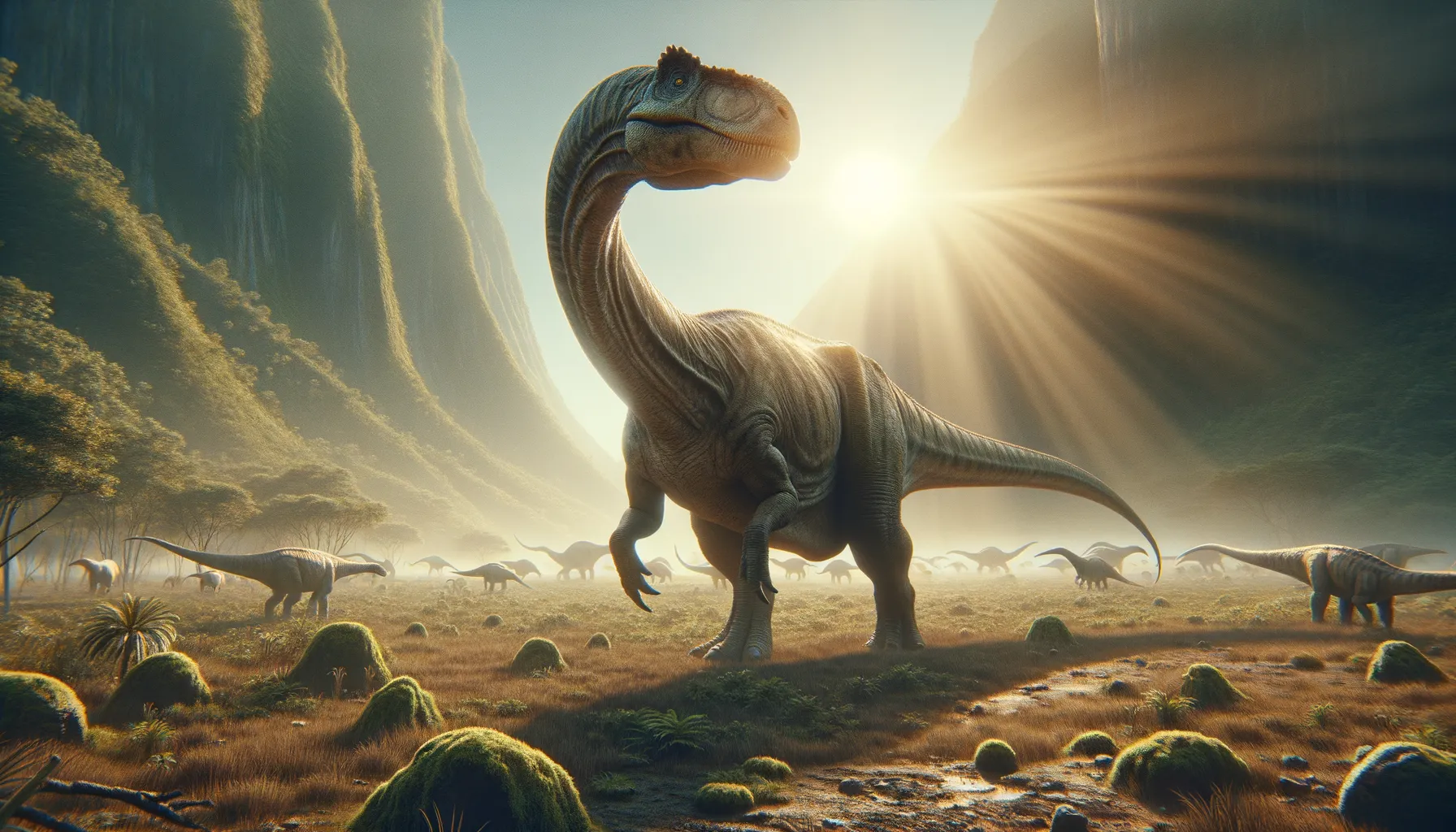
Dyslocosaurus
A gentle giant of the Jurassic age.
Period
Jurassic
Length
Approximately 45 feet long.
Height
Likely to have been around 10 feet tall at the shoulder.
Weight
Estimated to be several tons.
Dyslocosaurus was a large, herbivorous dinosaur that lived during the Late Jurassic period. Its fossil remains suggest it belonged to the sauropod family, known for their long necks and tails. Although not as well-known as some of its relatives, Dyslocosaurus offers important insights into the diversity and evolution of sauropods in North America. Limited fossil evidence has made reconstructing its exact appearance challenging.
Diet
Dyslocosaurus was herbivorous, feeding mainly on vegetation. It likely used its long neck to reach high plants and foliage. Its diet consisted mainly of leaves, ferns, and possibly flowering plants.
Hunting
Being a herbivore, Dyslocosaurus did not hunt. Instead, it foraged for vegetation. It likely spent a large amount of time slowly moving through its environment searching for food.
Environmental challenges
Dyslocosaurus faced environmental challenges such as fluctuating climates, which could affect the availability of plant life. Limited water resources at times might have forced it to travel long distances. Competition with other herbivores for food could have also been a concern. Natural predators would have targeted the young and infirm members of its species.
Speed
Slow-moving.
Lifespan
Unknown but assumed to be typical for large sauropods.
First discovery
Discovered in Wyoming, USA, in 1992.
Fun Facts
- Dyslocosaurus is known for its mysterious origins because its fossils were found far from where they would typically be expected to appear.
- The name Dyslocosaurus means 'hard to place lizard' due to its puzzling discovery location.
- This dinosaur lived during the Late Jurassic period, which was around 150 million years ago.
- Dyslocosaurus was a sauropod, a group of dinosaurs known for their long necks and tails.
- Despite its large size as a sauropod, Dyslocosaurus remains one of the more elusive dinosaurs with very few fossils found.
- Fossils of Dyslocosaurus were discovered in North America, adding to the intrigue about its habitat and migration patterns.
Growth and Development
Dyslocosaurus, like other sauropods, likely experienced rapid growth in its early years. Reaching such large sizes required substantial and efficient nutrient intake. Growth rates were influenced by environmental factors, including food availability. Fossil evidence suggests that juvenile sauropods were not simply scaled-down versions of adults but had different body proportions.
Habitat
Dyslocosaurus inhabited the lush, verdant regions of the Late Jurassic in what is now North America. It preferred areas with abundant plant life, like riverbanks and forested areas. Access to water was crucial, and they likely lived in environments where water sources were readily available. The region was rich in diverse plant species, providing ample food resources.
Interaction with other species
Dyslocosaurus coexisted with various other dinosaurs, including carnivorous theropods and other herbivores. It may have had mutualistic interactions with smaller animals, benefiting from their presence by them feeding on parasites. There would have also been competition amongst herbivores for food resources. Predatory threats likely led Dyslocosaurus to form groups for added safety.
Natural lifespan
The natural lifespan of Dyslocosaurus could have ranged from 50 to 80 years.
Reproduction
Dyslocosaurus is believed to have reproduced by laying eggs, as do modern reptiles. Nesting sites were probably chosen in areas with soft ground and sufficient cover. The eggs would likely have been laid in clutches, with communal nesting possibly being common. Hatchlings were considerably smaller and grew rapidly during their early years.
Social behaviour
Dyslocosaurus may have exhibited social behavior, potentially living in herds. Herding could provide protection against predators, especially for the young and weak. It might have communicated through vocalizations and physical gestures. Such social structures would facilitate group foraging and migration.
Fossil locations
Dyslocosaurus fossils have primarily been found in Wyoming, USA. The limited number of specimens makes it a rare find. These fossils provide key evidence for sauropod diversity in North America. Ongoing paleontological work continues to search for more complete specimens.
